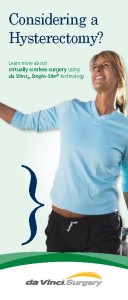Gynecology – Miami, Fl
Gynecological Problems
Gynecologic surgeries and procedures include benign (non-cancerous), cancer, infertility, and incontinence conditions. When medicine, lifestyle changes and other non-invasive treatments cannot ease your symptoms, and you are experiencing gynecologic conditions such as heavy bleeding, fibroid tumors, pelvic prolapse, or endometriosis your doctor may recommend gynecologic surgery. Your reproductive system consists of the uterus, vagina, ovaries, Fallopian tubes.
Da Vinci Gynecologic Procedures In Miami
The traditional type of surgery consists of a long incision that is made in your abdomen and is large enough for your surgeon to insert the instruments, and their hands to visualize the surgery through the incision. For years, open surgery has been common to many gynecologic procedures, but has certain defects due to the large incision. For women facing gynecologic surgery, other less invasive options are available.
Minimally Invasive Surgery
Considering a Hysterectomy?
Download Brochure
Learn About A Hysterectomy Using da Vinci® Single-Site® Technology
laparoscopy is the most common minimally invasive surgery. This surgery uses a thin, lighted tube that is inserted through a few small incision in the belly to view the abdominal or female pelvic organs. The tiny camera attached to the instrument projects images onto a video monitor in the operating room which guides surgeons as they operate.
da Vinci® Surgery
da Vinci Surgery is another minimally invasive option for women facing gynecologic surgery. With da Vinci, surgeons make just a few small incisions instead of a large one. The da Vinci System features a magnified 3D high-definition vision system and special miniature wristed instruments that bend and rotate to a greater degree than the human wrist. As a result, da Vinci allows your surgeon to operate with enhanced sight, accuracy, control.
Medical Robotic Technology
State-of-the-art da Vinci uses the most modern surgical and robotic technology and is beneficial for performing complex surgery. Your surgeon is 100% in control of the da Vinci System, which exchanges their hand movements into smaller, more precise movements of small instruments inside your body. Although it is often referred to as “robotic”, it cannot function without the doctor.
PN 1002173 Rev B 01/2014
Serious complications may occur in any surgery, including da Vinci® Surgery, up to and including death. Examples of serious or life-threatening complications, which may require prolonged and/or unexpected hospitalization and/or reoperation, include but are not limited to, one or more of the following: injury to tissues/organs, bleeding, infection and internal scarring that can cause long-lasting dysfunction/pain. Risks of surgery also include the potential for equipment failure and/or human error. Individual surgical results may vary.
Risks specific to minimally invasive surgery, including da Vinci Surgery, include but are not limited to, one or more of the following: temporary pain/nerve injury associated with positioning; temporary pain/discomfort from the use of air or gas in the procedure; a longer operation and time under anesthesia and conversion to another surgical technique. If your doctor needs to convert the surgery to another surgical technique, this could result in a longer operative time, additional time under anesthesia, additional or larger incisions and/or increased complications.
Patients who are not candidates for non-robotic minimally invasive surgery are also not candidates for da Vinci Surgery. Patients should talk to their doctor to decide if da Vinci Surgery is right for them. Patients and doctors should review all available information on non-surgical and surgical options in order to make an informed decision. For Important Safety Information, including surgical risks, indications, and considerations and contraindications for use, please also refer to www.davincisurgery.com/safety and www.intuitivesurgical.com/safety. Unless otherwise noted, all people depicted are models.




